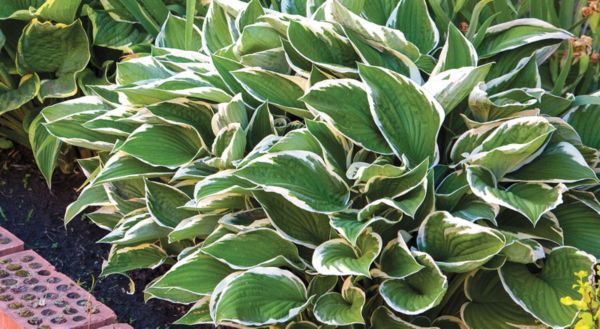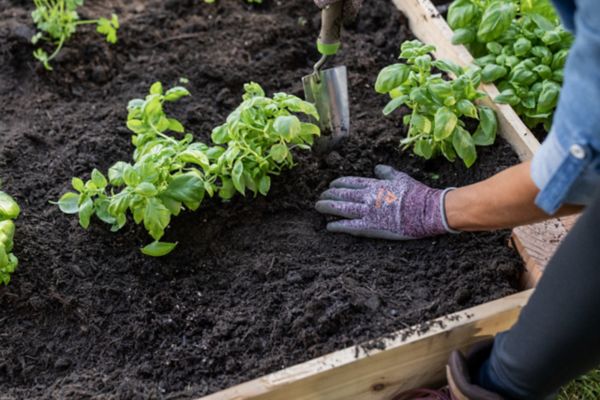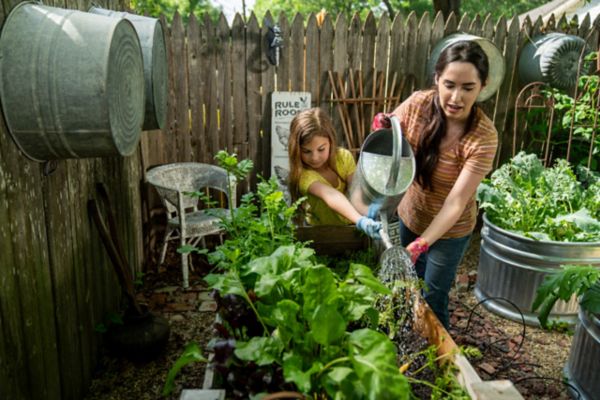How to Grow Asparagus
Authored by Leah Chester-Davis
Asparagus is delicious in salads or tossed with a light vinaigrette. It can be sautéed, roasted or grilled for a side dish. It can be chopped into omelettes, frittatas, soups, pasta or other dishes. It also can be pickled for year-round enjoyment. Find the right spot in your garden and reap the springtime bounty for years to come.
Asparagus is one of the first vegetables to appear in spring. Its long spears provide a tasty and elegant touch to any meal. Like most other vegetables, asparagus is best in season from your own garden. Growing this spring delight requires patience, perhaps more than any other vegetable, but fresh, tender spears are well worth the wait. Plant an asparagus patch now and in two to three years you will be rewarded with a harvest that will elevate your springtime culinary enjoyment.
Asparagus plants can last 15 or more years when given the right growing conditions and care. It’s certainly worth investing time and energy into preparing a growing bed for this popular vegetable. In addition to its great flavor, it is rich in good-for-you vitamins A and C, minerals, folate, and fiber.
About asparagus
| Botanical name: | Asparagus officinalis |
| Common name: | Asparagus |
| Plant type: | Perennial |
| Size: | 6 to 8 feet tall; spears 6 to 8 inches |
| Sun exposure: | Full sun |
| Soil type: | Most soil types |
| Soil pH: | 6.5 to 7 |
| Hardiness zones: | 2 to 8 |
| Average first frost: | Varies by region |
| Average last frost: | Varies by region |
| Container friendly: | No |
| Beginner friendly: | Yes |
Growing
Asparagus can grow from seeds though it is a slow process. Most gardeners start their asparagus patch with one- or two-year-old crowns, which are the roots. Asparagus needs full sun, at least 6 hours per day but preferably 8 to 10.
This vegetable can grow in many different types of soils, but it must be well-drained. Amend with organic matter before planting.
It prefers a pH between 6.5 and 7. If possible, test your soil before planting. Soil test kits are available at most county Extension centers for free or a nominal fee.
Think long term when siting an asparagus bed, preferably in an area that won’t be disturbed. The asparagus plant has tall ferns that can shade other plants, so plan accordingly. A well-cared-for patch can last 15 years or more.
Think long term when siting an asparagus bed, preferably in an area that won’t be disturbed.
Planting
Crowns are typically available in March or April. When ordering, schedule delivery close to the anticipated planting date. The crowns should be full and slightly moist but not soggy. If it will be a few days before you plant, mist them so they don’t dry out.
Plant crowns when they are dormant, two to four weeks before the last average frost date. This varies by region. Also, in colder climates, such as the upper Midwest or Northeast, it may be best to plant later. Check with your local garden center or county Extension office for best times and varieties for your area.
After the asparagus bed is prepared and soil is amended to be loose and friable (see below for fertilizer recommendations), dig a trench 6 to 12 inches deep and 12 to 18 inches wide. Allow for 4 to 5 feet between trenches. Space the crowns 15 to 18 inches apart in the trench. Some recommendations are to create a slight, 2-inch mound in the center of the trench. Position the crown atop the mound, allowing the roots to extend down its side, which is known as Octopus style. Cover with about 3 inches of soil. Firm the soil and water well. Another method, and one that may be less work and just as effective, is what is called “head-to-toe.” Minnesota Extension recommends laying the crowns bud-to-root tip in the furrow. This results in the buds or crowns being about 12 inches apart because the roots are often about that long. In this method, it isn’t necessary to spread the roots around the bud of the crown. Cover with 2 to 3 inches of soil. Water after planting.
Inspect garden beds weekly for spears. After they emerge add another inch or two of soil. Repeat this process until the trench is filled and slightly mounded. Add a thin layer, 1 to 2 inches, of mulch such as straw, grass clippings, chopped leaves, or pine needles to suppress weeds and help conserve water.
During the first year, don’t harvest the shoots or spears. Leave them to help facilitate the development of strong crowns. Yes, it’s difficult to not harvest the first year but your payoff will likely be the second and following years.
Hand pull any weeds before they grow too large, taking care when working around the crowns. Asparagus does not compete well with weeds; they affect its productivity, so keeping them in check will yield better results with your asparagus.
Plants will need about an inch of water each week.
During the first year, don’t harvest the shoots or spears. Leave them to help facilitate the development of strong crowns.
Fertilizing
If you have had your soil tested, follow recommendations. In the absence of a soil test, Minnesota Extension recommends applying 1 to 1.5 pounds of a 10-10-10 fertilizer per 100 square feet before planting.
After your asparagus patch is established, Minnesota Extension recommends a soil test every three years, cautioning that too much phosphorous over a period of years can result in build-up. Add fertilizer and amend the soil as necessary. An aged or composted manure that is added in early spring or after harvest may reduce fertilizer needs.
Avoid using weed and feed type fertilizers on vegetable plants.
Controlling Pests, Diseases, and Other Problems
Asparagus beetles feed on spears, resulting in brown and scarred stems. Handpick adults and larvae off the plant or use a botanical insecticide such as neem. Follow label directions.
Fusarium crown rot, asparagus rust, and Stemphylium purple spot affect the plant. Crown rot results in poor growth and yellow or dead stems. Rust causes yellow or orange spots on asparagus stems after harvest. Purple spot results in sunken purple spots on asparagus spears and tan spots with a purple edge appear on mature stems. Select varieties with resistance to rust and fusarium rot. If a fungicide is required, follow label directions.
Using best cultural practices helps reduce pest and disease problems. Quality crowns, healthy, well-prepared soil with good drainage, and proper spacing and mulching of plants to reduce weeds and conserve water helps give them an optimal environment. Scout your plants regularly, at least once a week during the growing season, and remove any infected plant parts from the garden.
Harvesting and Storing
During the second year, it’s time to begin enjoying the tender spears. Harvest lightly for about a month. This will allow for the root system to continue to develop for future seasons.
When the spears are 6 to 8 inches tall, cut them off at the base of the spear, just at or just below the soil surface. Do not cut deep into the soil to avoid injuring the crown. To snap a spear, bend the top toward the ground. The spear will break at the point where it is free of fiber.
During the third year, the harvest season can be extended to two months. Stop harvesting when the spears become small and spindly, when the diameter of the spears is less than a pencil.
After the season is over, allow the spears to continue to grow. The plant will grow tall, fern-like foliage. Leave the foliage through the summer, which helps nutrients move from the foliage to the crowns.
In the fall, after frost when the foliage yellows, cut the foliage down to 2 inches near the ground. For the winter, spread a 4- to 6-inch mulch around the plants.
Storing
Asparagus needs to be eaten soon after harvest. To store in the refrigerate for two to three days, wrap the ends lightly in a damp paper towel and place in a plastic bag. Asparagus can also be frozen.
To store in the refrigerate for two to three days, wrap the ends lightly in a damp paper towel and place in a plastic bag.
Expert Tips
- Start with healthy, disease-free plants. Asparagus is dioecious, which means that the male and female flowers form on separate plants. The female plants typically produce a lower yield due to putting energy into producing seeds. Female plants will produce small, red berries in the late summer or early fall. Some of the old standards are the Washington series, Martha Washington and Mary Washington. Look for male hybrid cultivars now on the market. Some of the more well-known are the Jersey series: Jersey King, Jersey Knight, Jersey Gem, Jersey Giant, Jersey Supreme. A popular purple variety is Purple Passion. Depending on availability, a mix of both male and female plants is common for many gardeners. Check with your local garden center or county Extension office for best varieties for your area.
- Employ good cultural practices such as taking care to prepare a soil bed with plenty of compost to enhance drainage and reduce compaction. Remove weeds while small to reduce any disruption to the crown.
Frequently asked questions
Why can’t I harvest spears the first year?
We know harvesting spears the first year is so tempting. However, harvesting the first year can reduce the yields and the quality. Give your plants time to grow and put energy into the crowns for a more productive harvest in future years.
What is the typical season and harvest time for asparagus?
Asparagus is a favored spring vegetable in early spring in most places. Generally, after your plants are established, say by the third and fourth years, the harvest will be from about four to six weeks. With the right growing conditions the season may even extend to a couple of months.
What do I do when the spears become very thin at the end of the harvest season?
Stop harvesting the spears and allow them to develop into ferns. The fern-like foliage will grow quite tall. The ferns are important. They photosynthesize and transport energy to the crowns. Let the foliage grow until fall, when it will need to be cut back to 2-inch stubs.
How many asparagus crowns do I need to plant?
That all depends on the size of your family and taste preferences. Maine Extension shares that a good rule of thumb is five crowns per person of the newer hybrid varieties.





